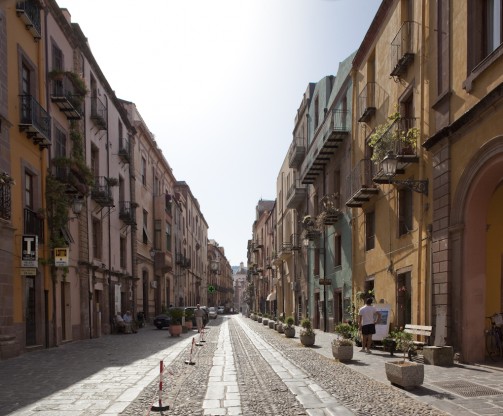Corso Vittorio Emanuele II is the most important street in the town of Bosa. It was once called Sa Piatta, a name derived from the word platha, which throughout Sardinia meant the main street. Its pavement consists of aligned basalt pebbles and slabs. Along the two sides rise its prestigious buildings, once the residence of the city’s noble bourgeoisie with different forms and styles, some of them from the 16th-17th century period, others from the 18th century, such as the Don Carlo Palace that faces Constitution Square. The nineteenth century saw the restoration of most of the houses on the Corso by the rising aristocratic-bourgeois class, who enlarged their living spaces by purchasing neighboring buildings and transforming them into a single palace. Evidence of these restorations are the Uras-Chelo palace, now Casa Deriu, the Sargenti-Randaccio palace, the Demuro-Spada palace, the Delitala palace, and others. Generally built on three levels in addition to the ground floor, the floor plan usually features two large rooms facing the Corso Vittorio Emanuele, two small central ones with no light socket, and two others facing the parallel street. The neoclassical facades feature muted colors, trachyte decorations and friezes depicting coats of arms of noble families, large wooden portals, and one or two wrought-iron balconies on the street. The interior features decorations and frescoes by Parma painter E. Scherer. Toward the east stands the Cathedral of the Immaculate Conception, and continuing toward Constitution Square, about halfway down the Corso, we encounter the Church of the Rosary with its Baroque-style facade, where the city’s large clock was placed in 1875.









